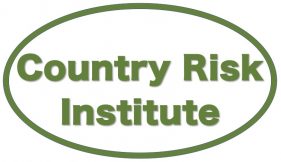About Us
Complexity, Uncertainty and Diversity Lovers
We encourage diversity of opinions on country risk, yet with courtesy and respect.
Our focus is aimed at enlarging the traditional boundaries of country risk analysis.
We think larger ideas, taxonomies and meta analyses are needed.
Since 2022, we created the Country Risk Institute, in order to free up voice on country risk
We created CRI for two reasons:
The first, is to make frustration voiced out on country risk methodology assessments and methods; and affirm the necessary diversity in opinion regarding global and country risks. This is an attempt to accept uncertainty regarding the old established methods or beliefs in country risk. Criticism is needed, although we believe in high respect in the way these criticism are done. No specialist in country risk is bad, and / but none should deny respect, courtesy, principle of democracy. This site is based in the UK, and we should all respect the UK law. The CEO and Admins of the site are fully entitle to delete any comments, criticism that are not respecting the minimum courtesy and mutual respect.
The second reason is that we believe that in the area of country /Sovereign ESG risk, there is a need of meta analysis, i.e a global methodology in order to replace all the types of country risks, including all non ESG and ESG factors in an overall taxonomy of country risk. This “CRI” taxonomy is meant to be refined overtime, but will help many investors, we think, partly lost in translation due to the lack of clarity on this, to navigate these risks, identify them for their activity , and choose the correct assessment method to investing in asserts appropriately. Luc, the creator of this site loves Taxonomy exercises, because he believes they are powerful – yet simple – tools for putting into context.
Why Country Risk Institute ?
Leverage our connections and experience !
Some Cool Facts
Numbers Speak For Themselves
Believe in creative thinking, innovation in Country Risk
We do both quantitative...
During my experience at S&P and NatWest, I did create number of models, databases on country risk, starting with the implementation of a regression model for sovereign rating, followed by the creation of a sovereign stress testing tool based on this model and various external data. I also created a new Country Reputational Risk Score and Country Overall FX Risk tool to assess currency misalignments. Contributed to the evaluation of Country Legal Risk rankings. Modelling Physical Risk into climate change risk for sovereign rating is also part of my background. I believe here more in innovation and structured analysis, with large input from various areas (politics, sociology, health, science, economics..) , using new big data (google trends..), rather than have the latest quantitative models in place. In all these models, the perfect forecast is viewed as "taken" from others (IMF, OECD..), and we try to focus on what is not assessed well by most economists .
....and qualitative analysis
I tried during the past 25 years to quantify in a form of ordinal ranking the different qualitative factors that sovereign. and country risk factors are often constituted of. This starts with all the Institutional, Social, and Political factors, and try to rank what is the high, medium and low risks for each categories. This is followed by various "Environmental" risks such as transition risks , or vulnerability risk are highly qualitative exercises as well. Finally, the various taxonomies of risks made me understand the importance of widening both the set of risks considered in the long term ESG risks , such as diversity risks, pollution and health risks per country, and all risks that are not measured systematically yet, and or not measured all in monetary impact terms; yet as important of sovereign investors and creditors. In order to assess these risks, innovative methods are required.
